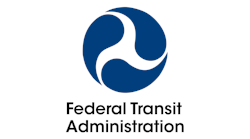FTA issues safety advisory recommending suicide prevention signage and messaging
The Federal Transit Administration (FTA) has issued a safety advisory encouraging transit agencies to implement, update or expand suicide prevention signage and messaging campaigns that apply best practices for reducing suicide attempts.
Suicide is the leading cause of fatalities on public transit in the United States, with most events occurring on heavy rail infrastructure. The National Transit Database shows suicides have consistently accounted for more than 40 percent of all transit fatalities over the past decade.
In addition to the tragic loss of life, these events bring trauma to witnesses and can also trigger service disruptions.
FTA says research suggests suicide prevention signage that includes hotline or crisis center information is effective at encouraging mental health intervention.
Transit agencies in the United States and internationally have found that suicide prevention signage has increased the number of suicide hotline calls. While transit-specific research is limited, multidisciplinary suicide prevention research has documented a correlation between suicide prevention signage and fewer suicide attempts per year.
FTA encourages transit agencies to install or update digital or physical signage to incorporate the following elements:
- Display the national Suicide & Crisis Lifeline phone number (988) and the local crisis center or local public transit helpline phone number.
- Direct patrons to nearby public phones, if available.
- Present information in all languages frequently spoken within the jurisdiction.
- Consider language, word choice and other demographic risk factors like age and gender within the jurisdiction for signage and messaging campaigns.
Additionally, FTA recommends transit agencies:
- Place suicide prevention signage in highly visible areas that pose the greatest risk for suicide.
- Convey anti-suicide and general mental health awareness information on public facing media, such as bus advertisement space, station booths, bus shelters, metro cards and vending machine screen savers.
- Partner with suicide prevention organizations, including community mental health organizations, to coordinate mental health and suicide prevention messaging and resources.
- Assess and monitor the effectiveness of different signage approaches and make use of any available data or information to guide transit agency activities on suicide prevention as part of the agency’s Safety Risk Management and Safety Assurance processes.
Mass Transit Staff Report
Stories under this byline were produced through a team effort by the editorial staff of Mass Transit.
To learn more about our team, click here.
If you have a story idea, let us know by emailing [email protected]. Please review our contributor guidelines found here.





